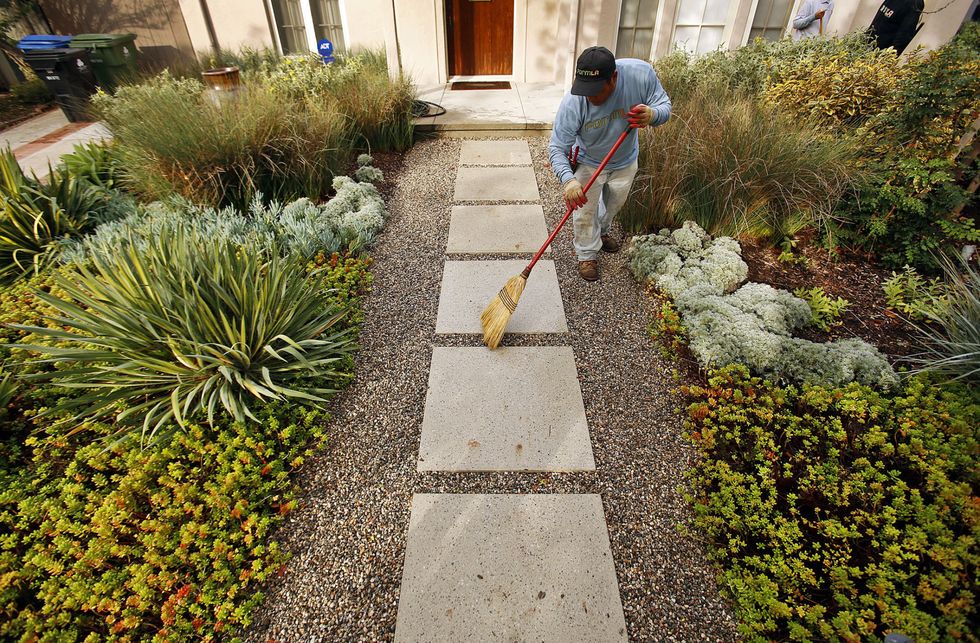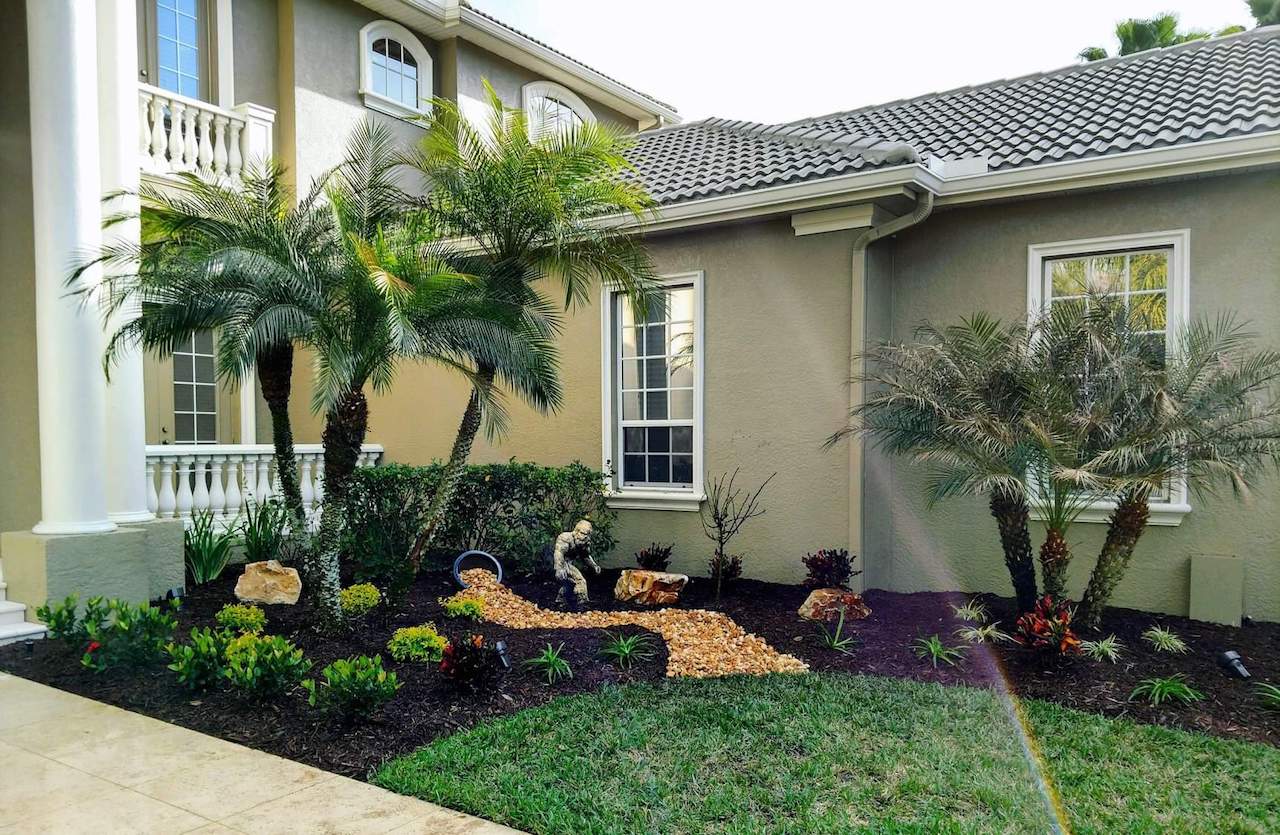Discover the Advantages of Lasting Palm Desert Landscaping Techniques
Discover the Advantages of Lasting Palm Desert Landscaping Techniques
Blog Article
A Comprehensive Overview to Designing and Implementing Effective Landscaping Solutions
The art and scientific research of landscaping expand past mere appearances; they include a thoughtful assimilation of design principles, ecological stewardship, and useful implementation. What methods can one employ to make certain these landscapes not only prosper but likewise grow in harmony with their surroundings?

Recognizing Landscape Layout Concepts
One may wonder what foundational elements add to efficient landscape design. At its core, successful landscape layout rests on a number of essential principles that guide the arrangement and option of aspects within a room. These principles include unity, percentage, rhythm, and balance, each serving to develop a harmonious outside environment.
Unity describes the natural connection amongst various elements, ensuring that they interact visually and functionally. Equilibrium can be achieved with unbalanced or balanced arrangements, permitting the landscape to really feel stable and welcoming. Percentage involves comprehending the range of elements in regard to each various other and the surrounding environment, promoting aesthetic consistency and comfort.

Examining Your Outdoor Room
Before executing the concepts of landscape layout, a comprehensive evaluation of your exterior space is important. This first assessment helps specify the extent of your landscaping project and makes certain that your design lines up with the special features of your home. Begin by assessing the measurements of your room, taking precise measurements to understand the available area for numerous elements such as patios, pathways, and yards.
Following, observe the existing features of your landscape, including topography, soil quality, and water drainage patterns. These variables significantly influence plant choice and positioning. In addition, assess the sunlight exposure throughout different locations throughout the day, as this will certainly affect the types of plants that thrive in your yard.
Take into consideration the microclimates developed by structures, trees, and other obstacles, as they can influence temperature level and wetness levels. Last but not least, take note of any kind of existing plants or hardscape components that you want to get rid of or maintain. This extensive evaluation lays the foundation for a knowledgeable and effective landscape design remedy, making certain that your layout is not just visually pleasing yet lasting and likewise functional for years ahead.
Sustainable Landscape Design Techniques
These techniques not only promote environmental equilibrium but also improve the functional and aesthetic value of a landscape. Applying reliable watering systems, such as drip watering, decreases water waste and ensures that plants get ample moisture (Palm Desert Landscaping).

Another efficient strategy is the tactical positioning of shrubs and trees to supply all-natural windbreaks and shade, hence lowering energy expenses (Palm Desert Landscaping). Rainfall yards can be integrated into the landscape style to take care of stormwater runoff efficiently, filtering system toxins prior to they get in rivers
Selecting the Right Plants
Choosing the right plants for your landscape is crucial to achieving both aesthetic allure and environmental harmony. The process begins with an understanding of your neighborhood climate, dirt problems, and the details microenvironments within your landscape. Assessing factors such as sunshine exposure, dampness degrees, and existing vegetations will certainly aid you pick plants that thrive in your unique setting.
Consider integrating native plants, as they are well-adapted to regional conditions, require less maintenance, website link and assistance neighborhood wild animals. In addition, picking a varied variety of types can improve biodiversity while decreasing the danger of disease and insect outbreaks. It is important to assess the growth habits, growing durations, and seasonal colors of possible plants to produce a cohesive and dynamic landscape.
Moreover, think of the planned usage of the space; as an example, if the location will certainly experience high foot web traffic, choose resilient ground covers. By attentively selecting plants that align with both your visual objectives and environmental demands, you can create a lasting landscape that not only boosts your property yet likewise contributes favorably to the surrounding ecological community.

Application and Upkeep Strategies
Once the ideal plants have been chosen for your landscape, the focus moves to reliable implementation and continuous upkeep approaches. Effective installation begins with appropriate website prep work, that includes soil testing to figure out nutrient degrees and pH, adhered to by modifying the soil as needed. Very carefully set up plants according to their development behaviors and light requirements, guaranteeing sufficient spacing to promote healthy growth.
Irrigation is an important component of execution. Develop a watering timetable that takes into consideration the specific needs of each plant species, adjusting for seasonal changes. Utilizing drip watering systems can boost water performance and lower drainage.
Upkeep methods have to be carried out to make certain the long life and vigor of your landscape. Routine tasks include weeding, mulching, and trimming to regulate development and stop illness. Fertilization ought to be carried out based upon soil tests, providing the essential nutrients without over-fertilizing.
Keeping track of for pests and diseases is necessary; early detection can prevent significant damages. Finally, seasonal adjustments to maintenance routines, such as winterizing perennials and preparing for spring development, will certainly make certain that your landscape remains visually enticing and healthy year-round.
Conclusion
Effective implementation and continuous upkeep better ensure the long life and vitality of landscapes. By incorporating these aspects, landscapes can be changed into gorgeous, useful settings that advertise biodiversity and contribute positively to community well-being.
One may wonder what foundational aspects add to efficient landscape layout. At its core, successful landscape layout hinges on numerous essential concepts that guide the plan and selection of aspects within a room.Picking the right plants for your landscape is critical to attaining both aesthetic allure and eco-friendly consistency. It is necessary to examine the growth routines, blooming periods, and seasonal shades of possible plants to create a natural and vibrant landscape.
Once the appropriate plants have actually been selected check this for your Discover More Here landscape, the focus changes to effective application and recurring upkeep techniques.
Report this page